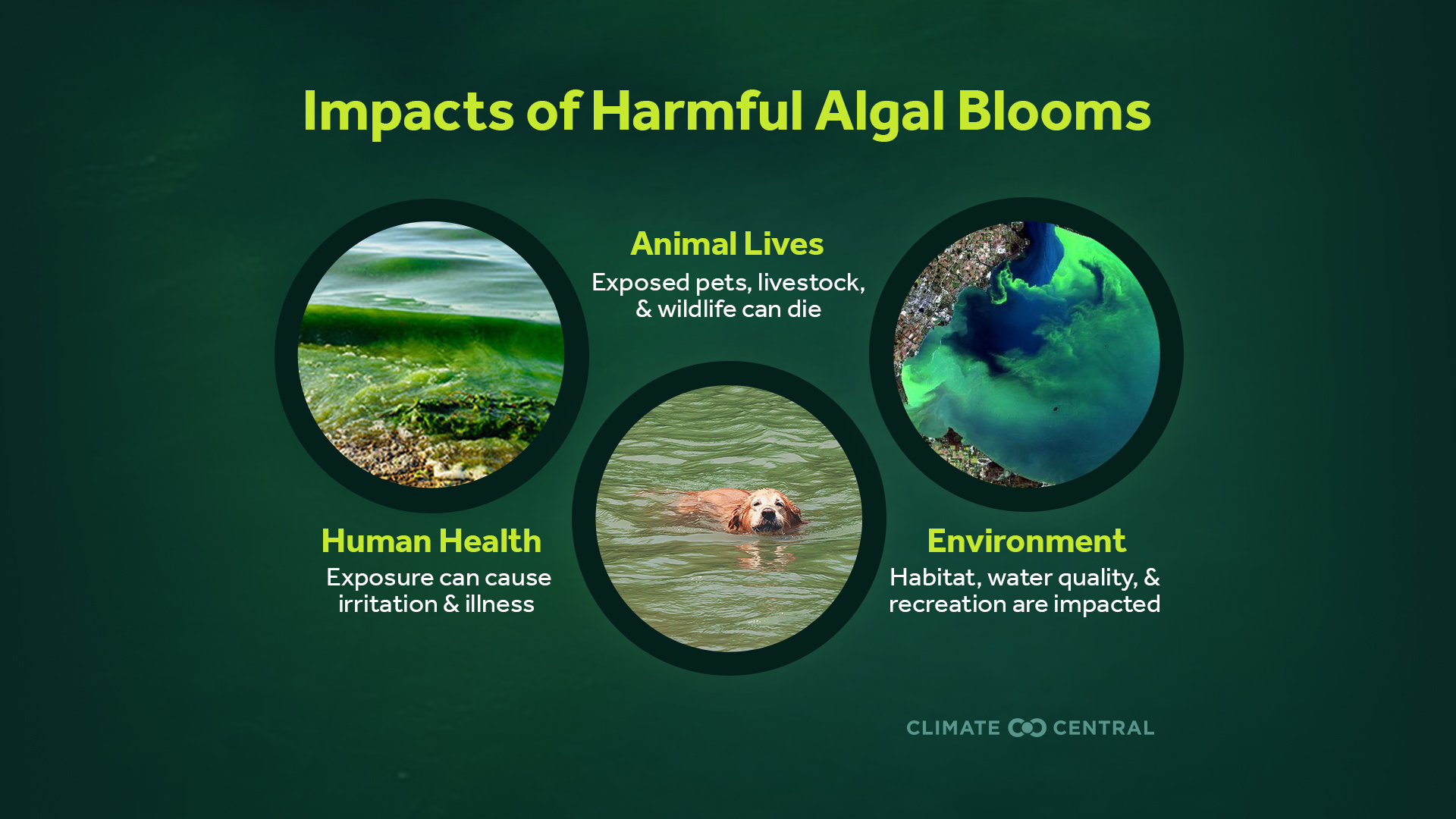California Coast Algae Bloom: A Growing Threat To Marine Ecosystems

Table of Contents
The breathtaking beauty of the California coast is under threat. Harmful algal blooms (HABs), also known as red tides or brown tides depending on the species, are increasing in frequency and intensity, posing a significant danger to marine life and human health. This article explores the growing threat of California coast algae blooms and their devastating impact on the delicate balance of our coastal ecosystems. We will examine the causes, consequences, and potential solutions to this pressing environmental issue.
<h2>Causes of California Coast Algae Blooms</h2>
Several factors contribute to the proliferation of harmful algae blooms along the California coast. Understanding these causes is crucial for developing effective mitigation strategies.
<h3>Nutrient Pollution</h3>
Excess nutrients in coastal waters fuel the explosive growth of algae. This process, known as eutrophication, is primarily driven by:
- Runoff from agriculture: Fertilizers and pesticides used in agriculture are washed into rivers and streams, ultimately reaching the ocean, providing a surplus of nitrogen and phosphorus – essential nutrients for algae.
- Sewage discharge: Untreated or inadequately treated sewage releases high levels of nutrients into coastal waters, further exacerbating the problem.
- Urban stormwater: Runoff from urban areas carries pollutants, including fertilizers, pet waste, and oil, which contribute to nutrient enrichment.
- Increased ocean temperatures: Warmer waters lead to stratification, creating layers of water with different temperatures and densities. This prevents mixing, trapping nutrients near the surface where algae thrive. The resulting warmer, nutrient-rich surface water fuels algal blooms.
The process of eutrophication involves a series of events: Nutrient input increases, leading to excessive algal growth. As algae die and decompose, bacteria consume large amounts of oxygen, creating hypoxic (low-oxygen) or anoxic (no-oxygen) "dead zones" that kill fish and other marine organisms.
<h3>Climate Change</h3>
Climate change significantly impacts the frequency and intensity of California coast algae blooms:
- Rising ocean temperatures: Warmer waters create ideal conditions for many harmful algae species to flourish and reproduce rapidly.
- Changes in ocean currents: Altered current patterns can transport algae blooms to new areas, expanding their impact.
- Increased frequency and intensity of storms: Intense rainfall events increase nutrient runoff, delivering a surge of nutrients into coastal waters.
These climate-driven changes create a perfect storm for HAB development, making them a more frequent and severe threat.
<h3>Natural Variability</h3>
While human activities are the primary drivers, natural processes also play a role:
- Upwelling events: These natural oceanographic events bring nutrient-rich waters from the deep ocean to the surface, providing a natural boost to phytoplankton growth. While this is a natural process, the increased nutrient levels from human sources can exacerbate the effect, leading to larger blooms.
- Natural cycles of phytoplankton blooms: Certain algae species naturally bloom seasonally, though the magnitude and toxicity of these blooms can be amplified by the factors mentioned above.
It's essential to recognize that natural variability contributes to HAB occurrences, but the overwhelming evidence points to human activities as the primary drivers of their increased frequency and intensity.
<h2>Impacts of California Coast Algae Blooms</h2>
The consequences of California coast algae blooms are far-reaching, affecting marine ecosystems, the economy, and human health.
<h3>Harm to Marine Life</h3>
HABs can cause devastating impacts on marine life:
- Fish kills: The depletion of oxygen in hypoxic or anoxic zones leads to widespread fish kills. Many species, including commercially important fish, are vulnerable.
- Shellfish poisoning: Many harmful algae produce potent toxins that accumulate in shellfish. Consumption of contaminated shellfish can cause serious illness, even death, in humans. Examples include paralytic shellfish poisoning (PSP), amnesic shellfish poisoning (ASP), and diarrhetic shellfish poisoning (DSP).
- Damage to coral reefs and kelp forests: Algal blooms can smother coral reefs and kelp forests, disrupting these vital habitats and affecting the diverse species that depend on them.
- Disruption of the food web: The death of marine organisms and the disruption of habitats have cascading effects throughout the entire food web.
For example, the toxic dinoflagellate Alexandrium catenella is responsible for PSP, impacting shellfish populations and threatening human health along the California coast.
<h3>Economic Consequences</h3>
The economic impacts of HABs are substantial:
- Closure of fisheries and shellfish harvesting areas: When toxins are detected in shellfish or fish, harvesting areas are closed, leading to significant economic losses for fishing communities.
- Reduced tourism revenue: Harmful algal blooms can make beaches unsafe for swimming and other recreational activities, impacting tourism revenue.
- Increased costs for water treatment and cleanup: Dealing with the effects of HABs, such as removing dead fish or treating contaminated water, adds considerable costs.
These closures and resulting losses can devastate coastal economies reliant on fishing and tourism.
<h3>Human Health Risks</h3>
Exposure to harmful algae can pose serious risks to human health:
- Neurotoxic shellfish poisoning (NSP): Consumption of contaminated shellfish can cause neurological symptoms, including paralysis and respiratory failure.
- Respiratory irritation: Aerosolized toxins from breaking waves can cause respiratory problems, especially in individuals with pre-existing conditions.
- Skin irritation: Contact with contaminated water can cause skin rashes and irritation.
These health risks underscore the importance of monitoring and public health advisories.
<h2>Monitoring and Mitigation Strategies for California Coast Algae Blooms</h2>
Effective management of California coast algae blooms requires a multifaceted approach combining monitoring, prevention, and mitigation.
<h3>Early Warning Systems</h3>
Early detection is crucial for minimizing the impacts of HABs:
- Satellite monitoring of ocean color: Satellites can detect changes in ocean color that indicate the presence of algal blooms.
- Water sample testing for toxins: Regular water sampling allows for the detection of specific toxins produced by harmful algae.
- Public health advisories: Issuing timely advisories warns the public about potential risks, such as shellfish harvesting closures or beach closures.
These systems provide critical information for managing risks and protecting human health.
<h3>Reducing Nutrient Pollution</h3>
Reducing nutrient runoff is essential for preventing HABs:
- Improved agricultural practices: Implementing sustainable farming practices, such as precision fertilization and buffer strips, can reduce nutrient runoff.
- Upgrading wastewater treatment plants: Improving wastewater treatment infrastructure removes nutrients before they reach coastal waters.
- Implementing green infrastructure: Green infrastructure, such as rain gardens and permeable pavements, helps manage stormwater runoff and reduce pollutant loads.
These measures are crucial for long-term prevention of HABs.
<h3>Climate Change Adaptation</h3>
Addressing climate change is crucial for mitigating the long-term impacts of HABs:
- Protecting and restoring coastal habitats: Healthy coastal ecosystems, such as kelp forests, can help buffer the impacts of HABs.
- Developing more resilient coastal communities: Building community resilience to HABs includes planning for closures, implementing effective communication systems, and diversifying local economies.
Adapting to climate change and its impact on HABs is crucial for the long-term sustainability of our coastal resources.
<h2>Conclusion</h2>
The increasing frequency and intensity of California coast algae blooms present a serious and multifaceted threat to the state’s valuable marine ecosystems and human well-being. Addressing this challenge requires a comprehensive approach that includes improving water quality, mitigating climate change, and enhancing monitoring and early warning systems. By understanding the causes and consequences of these blooms, we can work together to protect the health of our oceans and the communities that depend on them. We must continue to research and implement effective strategies to combat the growing threat of California coast algae blooms and ensure the long-term sustainability of our precious coastal resources. Learn more about how you can contribute to protecting our coast from harmful algae blooms and advocate for responsible environmental policies. Get involved in local initiatives focused on water quality and coastal protection to help combat California coast algae blooms.

Featured Posts
-
 The Killer Seaweed Threatening Australias Marine Life
May 30, 2025
The Killer Seaweed Threatening Australias Marine Life
May 30, 2025 -
 Metadoseis M Savvatoy 19 4 Ti Na Deite Stin Tileorasi
May 30, 2025
Metadoseis M Savvatoy 19 4 Ti Na Deite Stin Tileorasi
May 30, 2025 -
 All Air Jordan Sneakers Dropping In May 2025
May 30, 2025
All Air Jordan Sneakers Dropping In May 2025
May 30, 2025 -
 Jacob Alon Potential And Promise In Industry
May 30, 2025
Jacob Alon Potential And Promise In Industry
May 30, 2025 -
 The Countrys New Business Hotspots Where To Invest Now
May 30, 2025
The Countrys New Business Hotspots Where To Invest Now
May 30, 2025
Latest Posts
-
 The Reality Of Ai Learning Guiding Principles For Responsible Use
May 31, 2025
The Reality Of Ai Learning Guiding Principles For Responsible Use
May 31, 2025 -
 Responsible Ai Acknowledging And Addressing The Limits Of Ai Learning
May 31, 2025
Responsible Ai Acknowledging And Addressing The Limits Of Ai Learning
May 31, 2025 -
 Responsible Ai Acknowledging The Limitations Of Ai Learning
May 31, 2025
Responsible Ai Acknowledging The Limitations Of Ai Learning
May 31, 2025 -
 The Reality Of Ai Learning Building A Future With Responsible Ai
May 31, 2025
The Reality Of Ai Learning Building A Future With Responsible Ai
May 31, 2025 -
 Limited Time Offer 30 Off Lavish Spring Hotel Bookings
May 31, 2025
Limited Time Offer 30 Off Lavish Spring Hotel Bookings
May 31, 2025
